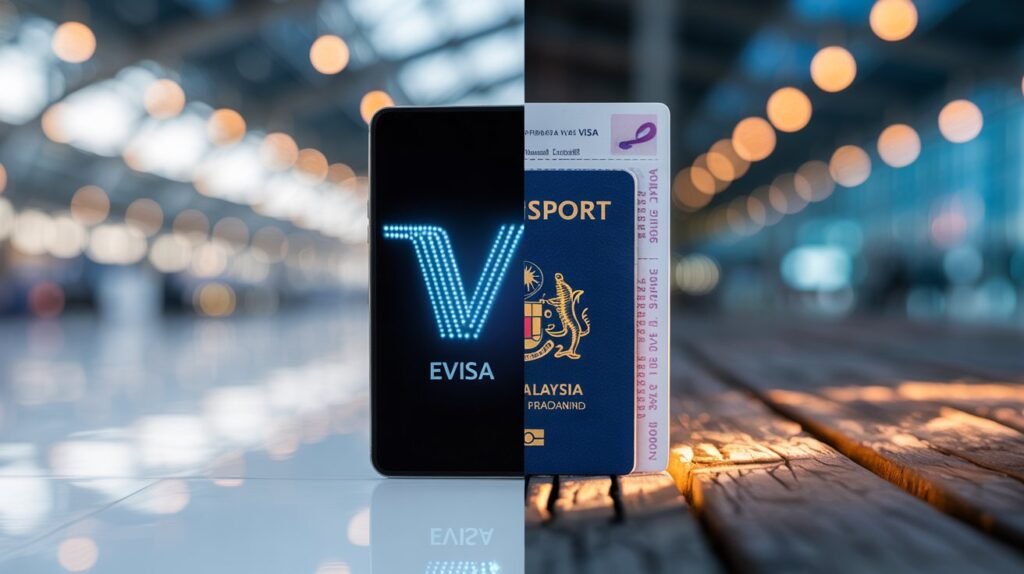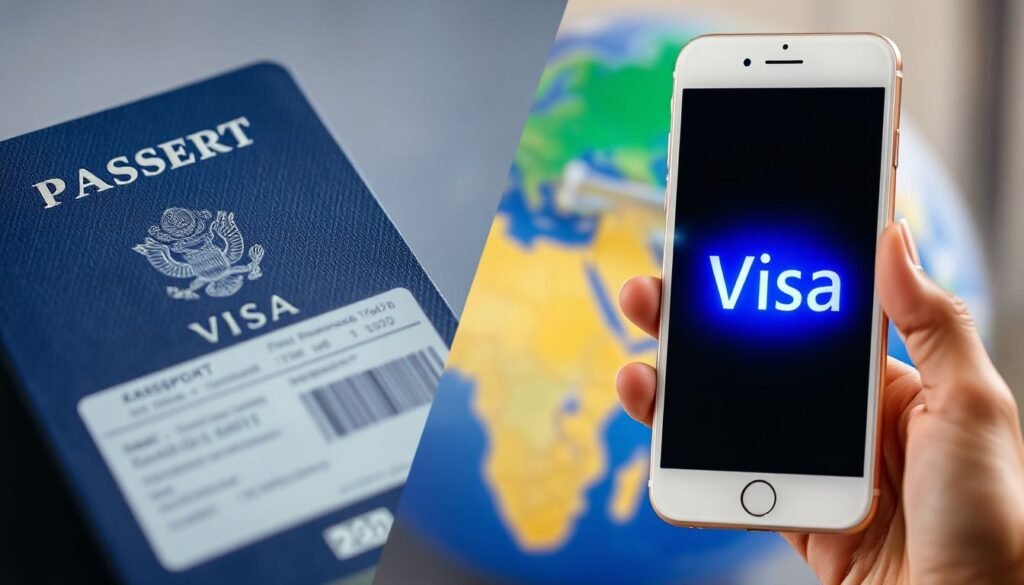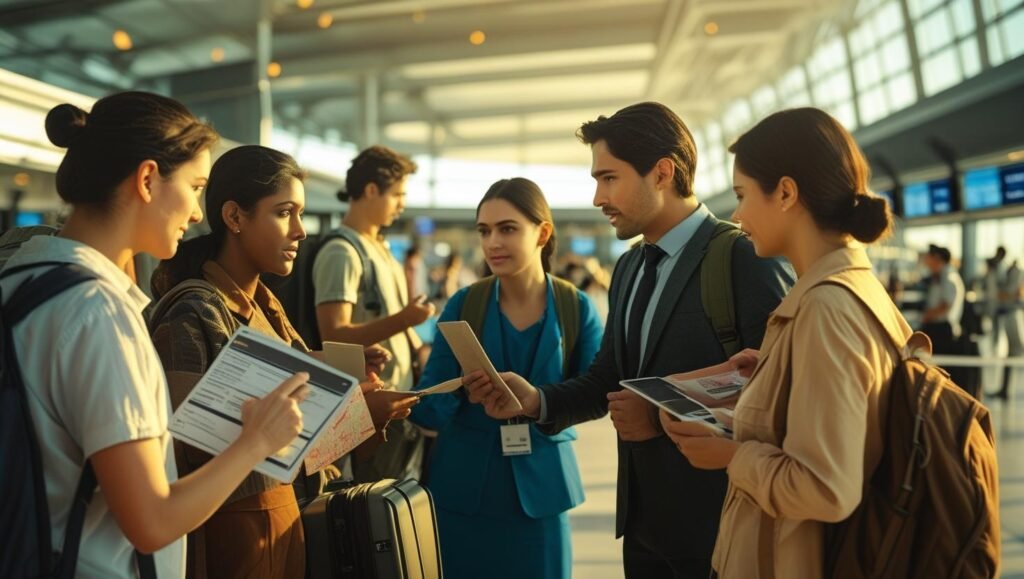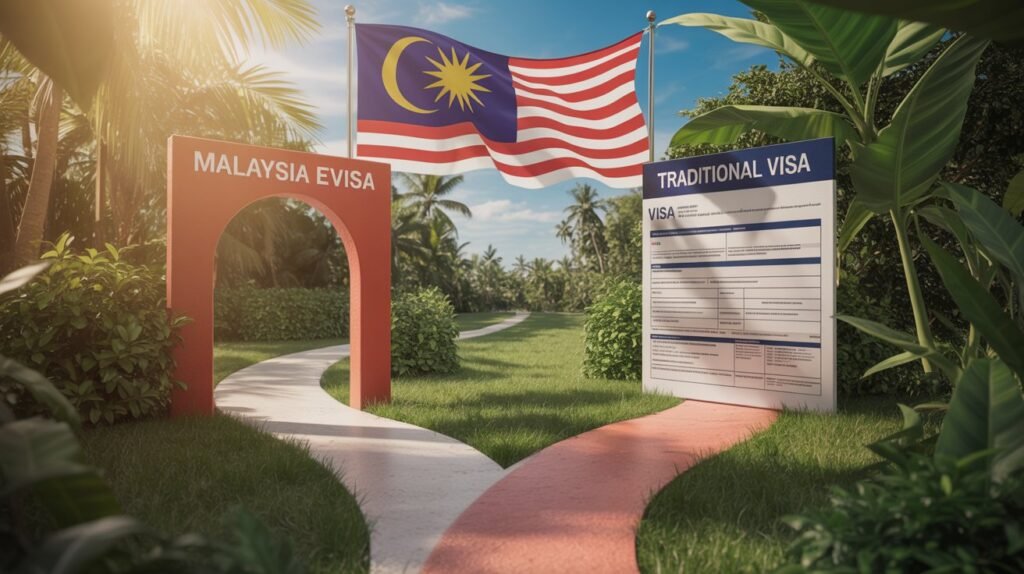Malaysia calls out to travelers with its vibrant culture and stunning scenery. From busy Kuala Lumpur to the peaceful beaches of Langkawi, this nation offers so much. It’s an economic powerhouse too, drawing many for business. Getting there needs proper planning, especially when it comes to your visa.
Most visitors face a choice between two main paths to enter Malaysia. You can pick the old-school traditional visa or the newer, more convenient eVisa. Online visas are quickly becoming the world’s favorite. They offer a simpler way to get your travel documents ready.
This article will help you sort out which visa suits you best. We will compare the Malaysia eVisa and the traditional visa. We will look at what each offers so you can pick the right one for your trip.
Understanding the Malaysia eVisa: A Digital Gateway
The Malaysia eVisa simplifies entry for many travelers. It is an electronic travel authorization. This digital permit allows eligible foreign nationals to enter Malaysia for tourism or specific short visits. It’s different from eNTRI, which was a separate, shorter-validity entry system. The eVisa targets citizens from a specific list of countries. These countries include India, China, Sri Lanka, and others.
The Application Process: Step-by-Step
Applying for an eVisa happens entirely online. You visit our eVisa portal to start. You will need certain documents ready. This includes a clear digital photo of yourself. Make sure your passport is valid for at least six months from your entry date. You also need confirmed flight tickets and hotel bookings.
Payment is made online using a credit or debit card. Processing times are usually quick, often just a few working days. To avoid delays, double-check all information before submitting. Use clear, current photos. Any mistakes can slow down your application.
Benefits of the eVisa
The eVisa brings great convenience. It saves you trips to an embassy or consulate. The application process is much faster than traditional methods. You can do it from anywhere with internet access. There is less paperwork to gather physically. This flexibility helps when planning your trip. You can apply closer to your travel date. In some cases, the eVisa might even cost less than a traditional visa.

Navigating the Traditional Visa: The Conventional Route
Sometimes, a traditional visa is your only choice. This usually applies to citizens from countries not eligible for the eVisa. It’s also needed for certain travel purposes. If you plan a long-term stay, a specific work assignment, or to study, you will likely need a traditional visa. The requirements for these visas often differ greatly from the eVisa.
The Traditional Visa Application Journey
Getting a traditional visa means visiting a Malaysian embassy or consulate. First, you must find the correct diplomatic mission in your country. You will gather a range of physical documents. This often includes application forms, recent passport-sized photos, and supporting letters. Bank statements or proof of funds are also often required.
Next, you typically need to schedule an appointment. You will submit your documents in person. The processing times for traditional visas vary widely. They can take weeks or even months. Delays can happen due to high demand or complex cases.
Pros and Cons of Traditional Visas
A traditional visa might be your only available option. It often involves more scrutiny from officials. This can lead to longer processing times. You must usually be present for submission or collection. This means more planning and travel time for you.
Key Comparison Factors: eVisa vs. Traditional Visa
Choosing between a Malaysia eVisa and a traditional visa comes down to key differences. Understanding these helps you make the best decision. Let’s look at how they stack up.
Application Speed and Convenience
The eVisa wins big on speed and ease. You can apply from home, anytime. Processing often takes just a few days. Imagine a traveler needing a visa quickly for a spontaneous trip. The eVisa is perfect for them. A traditional visa, however, requires more time. You must factor in embassy hours, appointment waits, and longer processing. Someone with ample planning time might not mind this.
Documentation and Requirements
Both visas need documents, but their format differs. The eVisa asks for digital copies. You upload scans of your passport and photos. For a traditional visa, you often submit physical originals or certified copies. This can include letters from employers or invitation letters. Always check the very latest requirements for your specific nationality and travel type. Visa rules change, so fresh information is key.
Costs and Fees
Visa fees vary. An eVisa generally has a set online fee. Traditional visa costs can differ more. They might include additional service charges from third-party centers. Factor in travel costs to an embassy if it’s far. The overall financial commitment for a traditional visa can sometimes be higher.
Eligibility and Validity
The eVisa is available only to specific countries. Traditional visas cover all other nationalities. eVisa validity is typically shorter, often for a single entry. Traditional visas can offer longer validity or multiple entries. A travel expert once said, “Visa policies are dynamic. Always verify the latest rules on official government sites.” This highlights the importance of checking current details.

Who Benefits Most? Matching Visas to Traveler Needs
Your travel style and purpose greatly affect which visa is better. Each option serves different kinds of trips. Knowing your needs helps you pick wisely.
The Frequent Traveler
For those who visit Malaysia often, the eVisa simplifies things. You can apply quickly for repeated visits. Business travelers on short, regular trips find this highly beneficial. Tourists who enjoy short, frequent getaways also gain from its ease. The digital process makes it a go-to choice.
The Long-Term Visitor or Specific Purpose Traveler
A traditional visa is often the only option here. If you plan to study in Malaysia, or work for an extended period, you will need a traditional visa. These visas come with specific endorsements. They allow for longer stays. They fit travelers whose visit goes beyond simple tourism.
The Last-Minute Planner vs. The Prepared Traveler
The eVisa is a gift for spontaneous trips. If you suddenly decide on a Malaysian holiday, the eVisa can be ready fast. It is great for last-minute holiday bookings. A traditional visa requires much more upfront planning. It is suited for someone with a carefully planned academic visit. This person has time to gather documents and attend appointments.




Expert Insights and Official Guidance
Getting your visa right starts with good information. Always look for facts from official sources. This prevents problems later on.
What Official Sources Say
The Malaysian Immigration Department website is your best resource. It lists eligible countries for the eVisa. It also provides key advisories and updates. These government sites offer the most accurate information. Some countries might also use visa facilitation centers. These centers help manage applications on behalf of the embassy.
Travel Expert’s Advice
A seasoned traveler once noted, “Always use our portals. Never trust unofficial sites that claim to process visas.” This helps you avoid scams. Many fake visa sites exist. They can trick you into paying too much or giving away personal data. Ensure the website address is correct before you start an application.
Common Mistakes to Avoid
Many travelers make common errors. Don’t fill out forms incorrectly. Double-check every detail. Submitting invalid or expired documents will lead to rejection. Understand your visa conditions fully. Do not overstay your visa limits. This can cause serious issues for future travel.
Conclusion
The Malaysia eVisa offers a fast, convenient digital path for many. The traditional visa remains vital for specific nationalities and longer stays. Both have their own strengths. The “better” choice depends totally on you. Your nationality, why you are visiting, and how much time you have to plan all matter.
Before you finalize any travel plans, always check our website. They have the most current and accurate visa rules. This small step ensures a smooth, stress-free trip to beautiful Malaysia.
Frequently Asked Questions: eVisa vs. Traditional Visa for Malaysia
What is the main difference between an eVisa and a traditional visa for Malaysia?
An eVisa is an electronic visa applied for online. A traditional visa requires visiting an embassy or consulate in person. This makes the eVisa much more convenient for many travelers.
How long does it take to get a Malaysia eVisa compared to a traditional visa?
Malaysia eVisas are typically processed faster, often within a few business days. Traditional visas can take longer due to in-person requirements and processing times at diplomatic missions.
Can I apply for a Malaysia eVisa from anywhere in the world?
Generally, you can apply for a Malaysia eVisa from any country with internet access. However, eligibility may depend on your nationality and the country you are applying from.
Are there different types of eVisas and traditional visas for Malaysia?
Yes, both eVisa and traditional visa systems offer various categories. These categories often depend on the purpose of your visit, such as tourism or business.
What are the costs associated with each visa type?
Visa fees can vary for both eVisas and traditional visas. It’s important to check the official Malaysian immigration website for the most current fee information.
Which visa type offers more flexibility for travel plans?
The eVisa often provides greater flexibility due to its online application process. You can apply from home and receive your approval electronically, simplifying travel arrangements.



